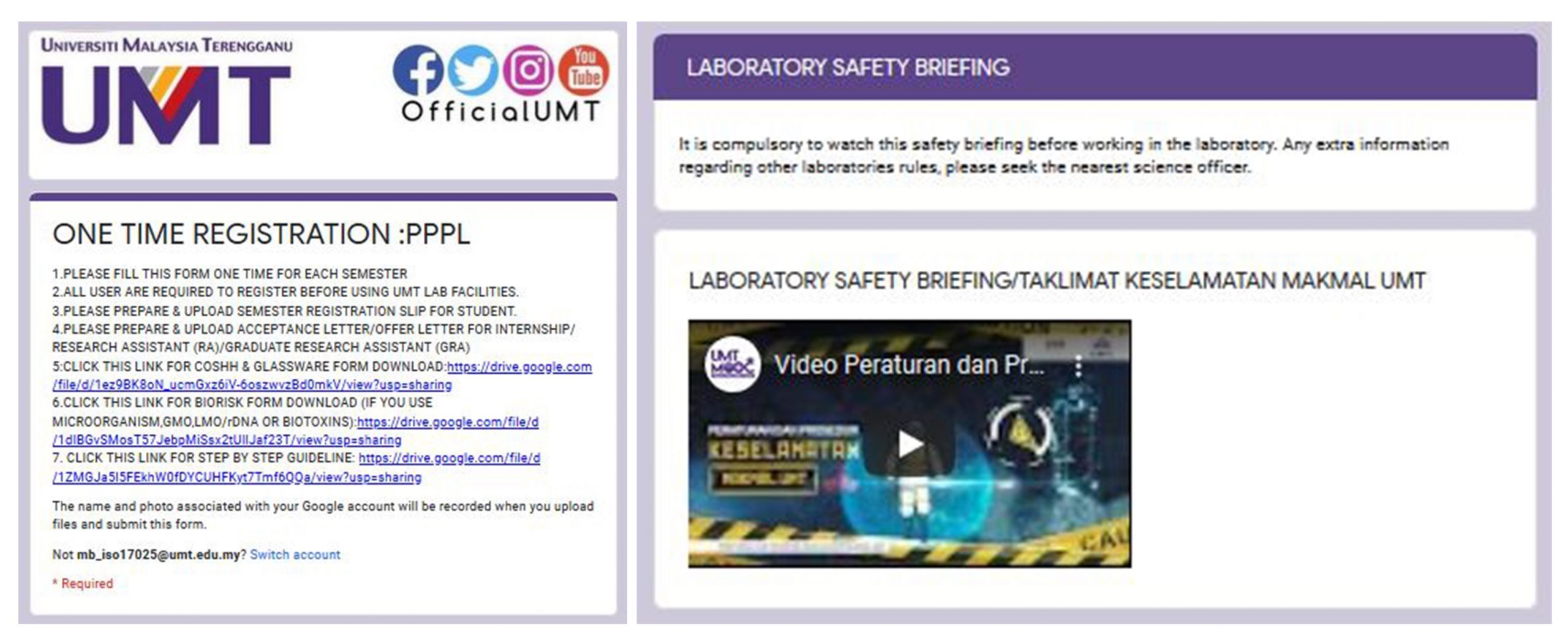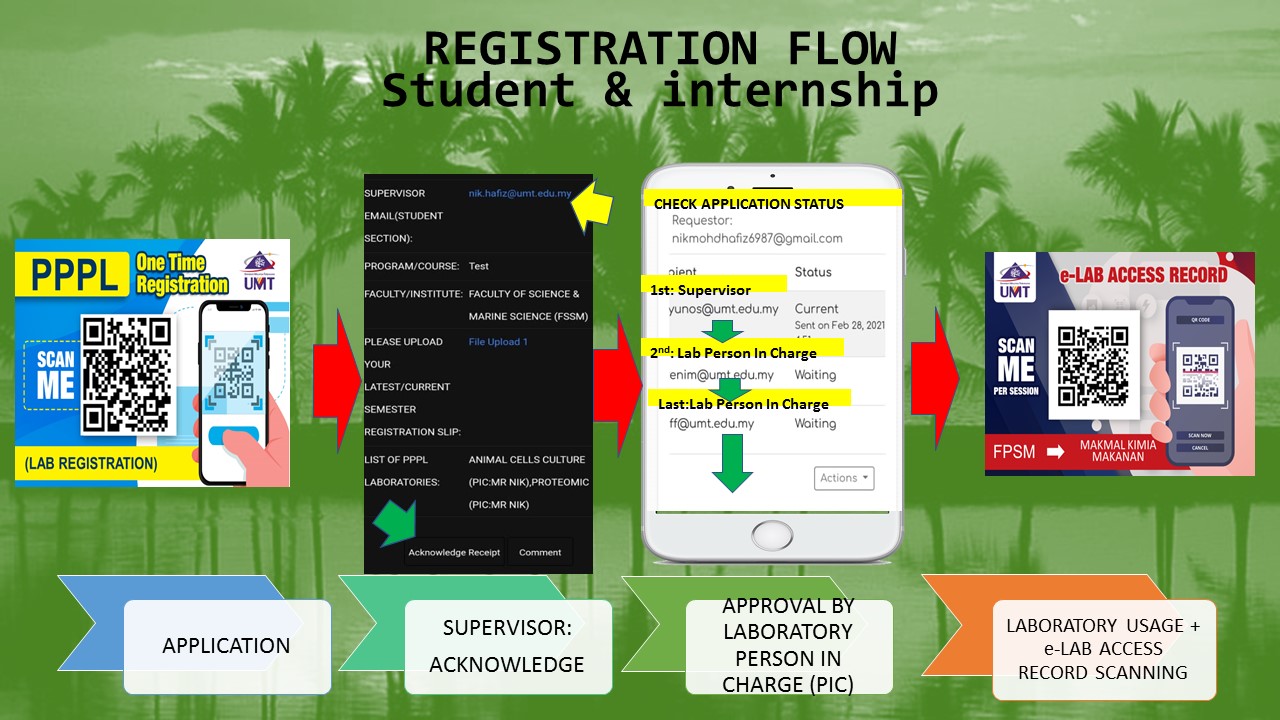e-Lab Access Record (e-LAR)
e-lab access record (e-LAR) is a digital record system for online laboratory use that employs a QR scan application, smartphone and internet connection. This system, which consists of laboratory registration (One Time Registration) and scanning of laboratory use (e-Lab Access Record), was officially launched on March 1, 2021.
One Time Registration is a laboratory registration record that requires the user to fill out all of the applicant’s information. The supervising lecturer and science officer in the respective laboratory will then verify the application. Applicants must also include the Control of Substances Hazardous to Health (COSHH) form and the Biorisk form (if the research involves genetically modified organisms (GMOs), living modified organisms (LMOs), rDNA or biotoxins and others) in their One Time Registration.
Science Officers can check and assess the level of risk that applicants or users will face using the COSHH and Biorisk forms. The information on the form assists the Science Officer in determining the application’s approval while also providing reasonable and practical steps to reduce the risks that students will face when conducting experiments.
Since the UMT laboratory is concerned about the safety and health of its users, a video briefing on laboratory safety is included and can be viewed on a smartphone instantly before filling out the One Time Registration. In addition to laboratory registration, the One Time Registration platform also allows users to apply for laboratories outside of office hours, making it easier for users to apply online at any time.
Once an application is approved, the user is permitted to use the laboratory listed on the application list. Users will scan the QR code displayed in each research and teaching laboratories, workshop, hatchery, computer laboratory and so on. Thus, using this e-Lab Access Record would provide numerous benefits to both users and laboratory management.
Among them :-
- More flexible online application.
- The coordination of methods and procedures for applying laboratory can be implemented more effectively at UMT.
- The frequency at which a laboratory is used can be easily determined.
- Access to faster, more accurate and reliable laboratory usage data.
- The applicant's data security is more guaranteed.
- Users can easily check the status of their application process (tracking system).
The involvement of UMT laboratory partners such as institutes and faculties in implementing this system is viewed as a solid partnership based on the same principle of providing the best service to its customers, the students, in a healthy and safe environment. In summary, this innovation also supports the UMT Strategic Plan (Core 3 and Strategic Objective 3), which focuses on creating a conducive campus environment with facilities and infrastructure that support IR 4.0.




